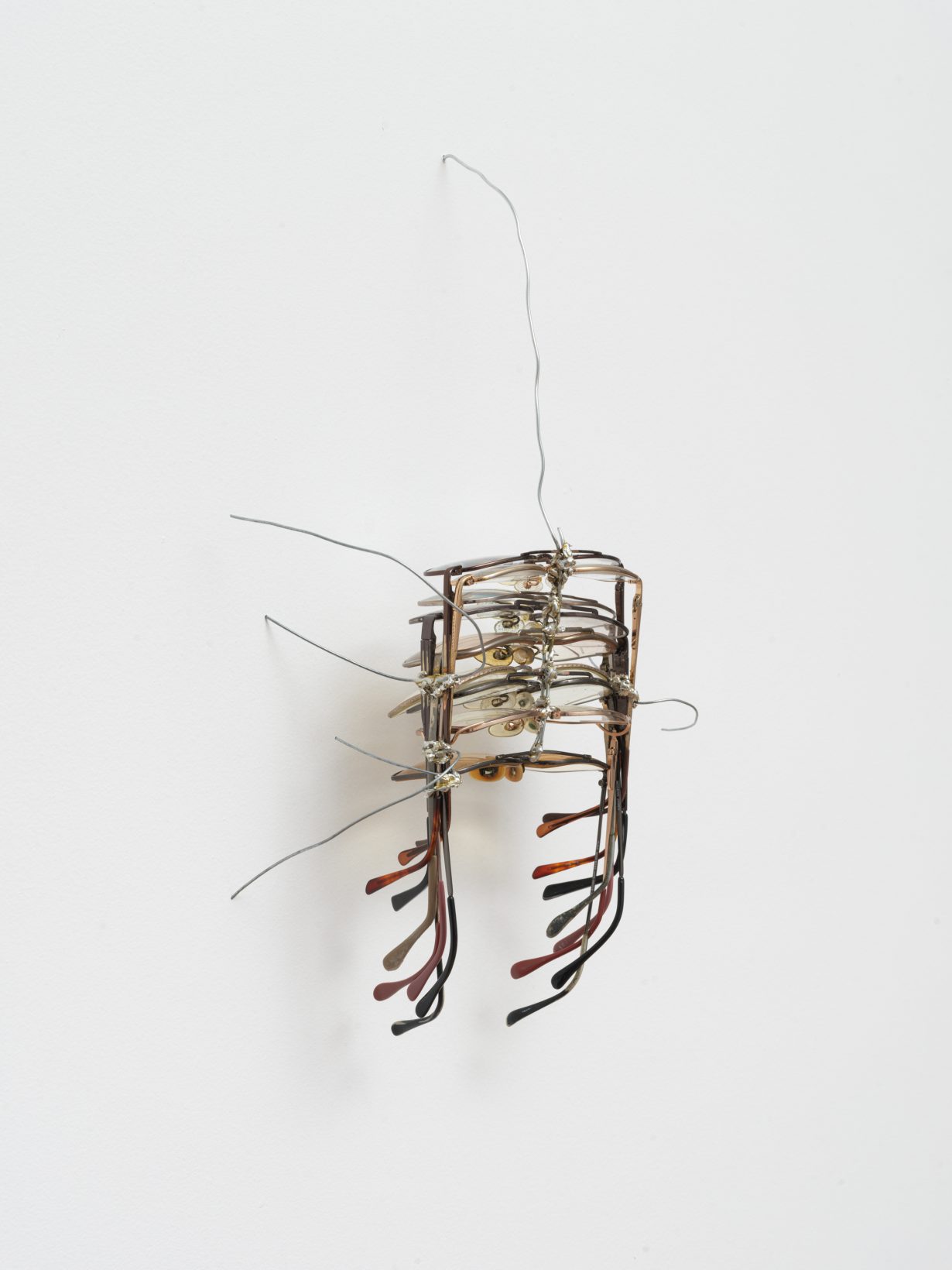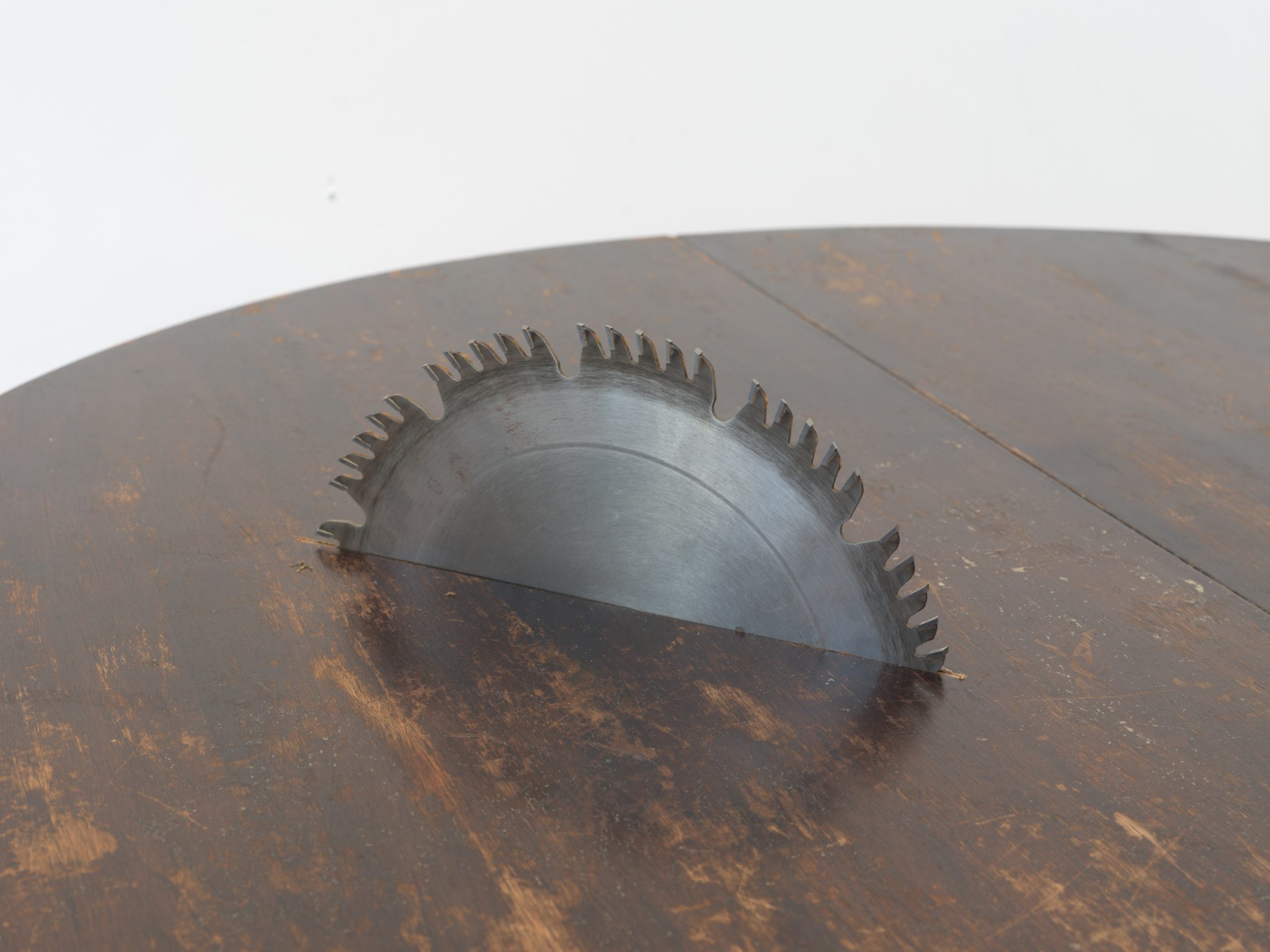What A String of Tongueless Bells at Francis Irv, New York has to say about the problem of the group show form
As a phrase, ‘a string of tongueless bells’ conjures the form of sound, absent resonance itself – bells without clappers are open mouths that do not speak. Does this absence of sound draw us closer to the instruments, the objects themselves? As the title of an exhibition, the phrase seems to describe the problem of the group show form, in which works by different artists are strung together, their individual power often stifled. When the assembly does work, the linked objects produce the semblance of a chorus, muted but well choreographed. A String of Tongueless Bells takes on this challenge, foregoing a press release and thus making each work stand for itself, motivating associative readings and attention to form and process.
Isolated on a long wall in the one-room gallery is Win McCarthy’s Untitled (Orange Angles) (2024), a sculpture made of several aluminium L-square rulers whose perpendicular arms were amputated before they were welded together, end to end. The numbers are of course not continuous, and the vigorous grinding of the welds further obscured some of the figures, but the checklist reveals that this ruler is now 69 inches tall. What was this jig made to measure? Is this the height of Win McCarthy? His other work nearby, 7 x Lucy (2024), is fashioned from nine pairs of eyeglasses stacked lens to lens and emphatically soldered together. The arms of the glasses have been wrapped together with wire, also soldered but left with loose ends, some of which pin the sculpture to the wall, and all of which look like the flailing antennae of a squashed bug. If the idea is to open a file on McCarthy – to study him as he seems to be studying himself – the joke is that we just need to see him more clearly.

While several works here read as anxious assemblages, others emphasise pointed interruptions. Standing opposite Untitled (Orange Angles), a sculpture by Phung-Tien Phan establishes a lurking sense of violence: the circular blade of a table saw has been inset into a small wooden dining table such that, though static, it seems to threaten to divide and collapse the table in a loud interruption of a domestic scene – or perhaps, in line with McCarthy’s objects-as-portraits, the work visualises an ongoing family dynamic, as the work’s title, Senior (2024), implies. If there is a vulnerable subject or silent witness in the room, it is Osama Al Rayyan’s small untitled bronze sculpture (2024) of what might be a sleeping child, scaled to fit in two cradled hands and coloured an almost matt black. Its sombre, unsettling quality is accentuated by the bloated, almost puckered appearance of the skull, and the rough-hewn textures of the clay from which the bronze was cast. The figure seems to have begun decomposing even before it was fully formed.
Interpreting a show is often like piecing together an elusive narrative but still wanting to sit with the mystery. Here that impulse is enhanced by the gallery’s dark wooden fittings, which give it the feeling of a 1980s detective’s office – furthered by Paul Sietsema’s dark painting, above the built-in office desk, of a rotary dial telephone, made sleek, almost forensic, with greyscale hues and crimson undertones. It is rendered silent in multiple senses: according to a press release from a 2023 show, Sietsema unplugged the phone, took the receiver off the hook, smothered the whole machine in paint before photographing it from above and then meticulously painted this work from that image – bubbles, dust and all.
In Diane Seuss’s 2022 poem ‘Allegory’, from which this exhibition’s title was taken, the writer grapples with having left behind ‘a place filled with plotless stories’. As with the bells’ lacking tongues, those stories’ absence of plot is not considered negative – they are, rather, like ‘chalices in which wine would be superfluous’. Several of these artists have previously resisted explaining their works, perhaps hoping, as many of us do, that they have created such chalices – open forms that have space for, but do not provide or overdetermine, content. Apparent here is the simultaneous significance, in that absence of explanation, of the larger ‘place’ – the context in which those plotless stories exist, the studio or practice from which the works are drawn, the companion pieces on view that help triangulate a larger world, the string along which those tongueless bells are hung. A rich group show balances absence and presence, and lets us see the loose ends of the string itself.
A String of Tongueless Bells at Francis Irv, New York, 13 July – 17 August
